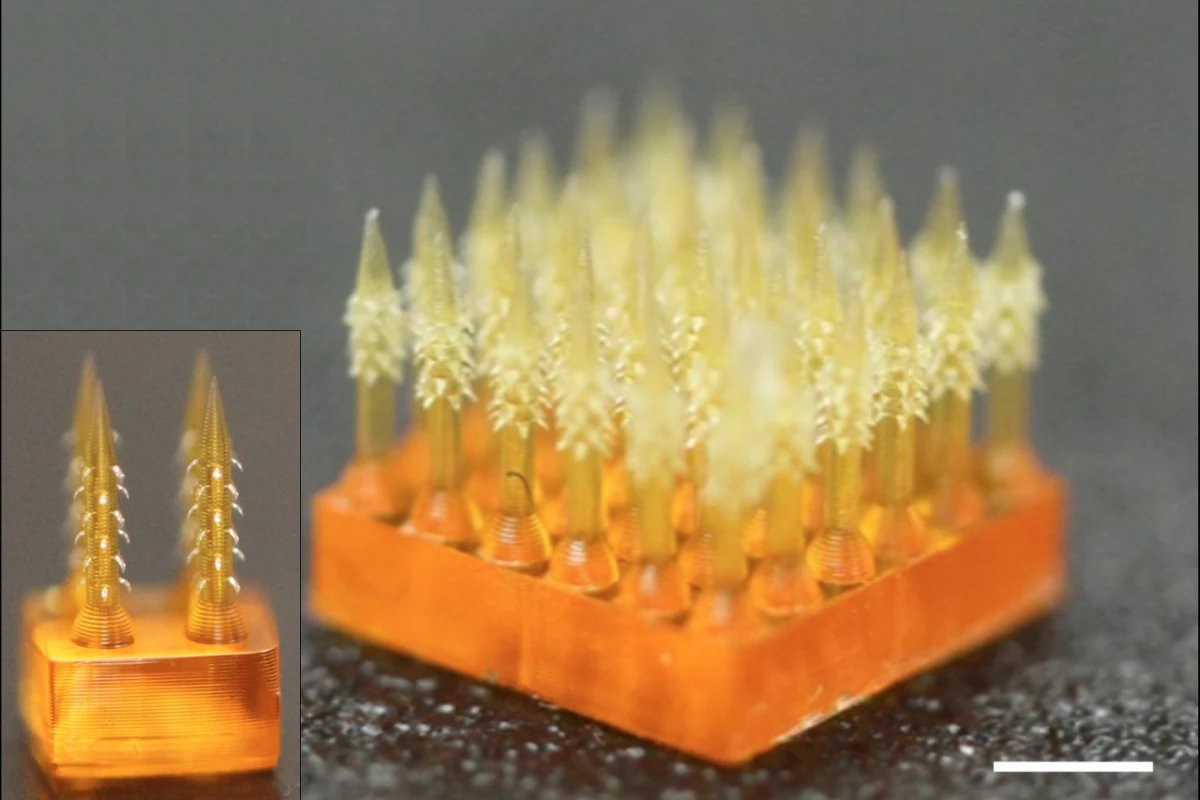In nature, pest insects and other parasites latch onto their hosts by inserting backward-facing barbs into their tissue. Scientists have now copied that strategy, in a system that could someday replace painful hypodermic needles.
Developed at New Jersey's Rutgers University, the new technology is a form of microneedle patch.
Such patches generally consist of a small, flat square of biocompatible material, with an array of tiny, medication-filled needles on its underside. When the patch is pressed against the patient's body, those needles painlessly pierce the very top layer of the skin. They then harmlessly dissolve, dispensing their payload into the interstitial fluid that surrounds the skin cells. From there, the medication enters the bloodstream.
Unfortunately, though, existing microneedle patches have difficulty remaining stuck in the skin for very long. This means that they're not ideal for the sustained release of medication over time, or for the ongoing collection and analysis of biological fluids. That's where the Rutgers patch comes in.
It's 3D-printed out of a photocurable polymer, although the process is actually known as 4D printing, with the fourth dimension being that of time. This distinction is made because after the patch has been initially printed, a series of backward-facing barbs proceed to bend out from the sides of each microneedle – these barbs interlock with biological tissue.
As a result, when inserted into such tissue, the new patch's adhesion strength is 18 times that of a conventional barbless microneedle patch. Studies have reportedly shown that it therefore offers stabler, more robust delivery of drugs, and better collection of biofluids. The barbed needles still do eventually dissolve, though, once their work is done.
A paper on the research, which was led by Asst. Prof. Howon Lee, was recently published in the journal Advanced Functional Materials. You can see the barbed microneedle patch being tested on a piece of chicken muscle, in the video below.
Source: Rutgers University




